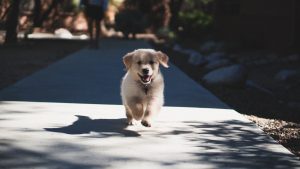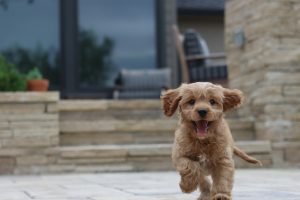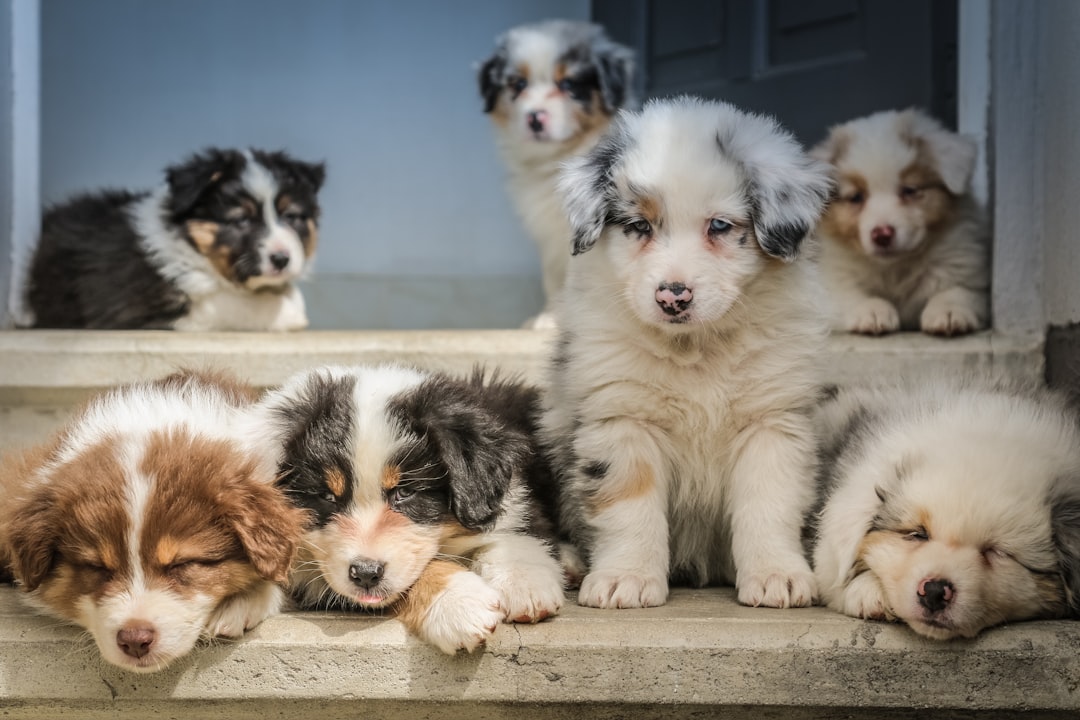Positive Reinforcement and Effective Methods: The Key to Successful Potty Training and Housebreaking
Using positive reinforcement and effective potty training methods, this article highlights the importance of consistency and patience in successfully housebreaking a puppy.
The Importance of Positive Reinforcement in Potty Training
Positive reinforcement plays a pivotal role in potty training as it not only helps in shaping the puppy’s behavior but also fosters a strong and positive bond between the owner and the puppy. When a puppy is praised or rewarded for exhibiting the desired behavior, such as eliminating in the designated spot, it learns to associate this action with positive outcomes. For example, when the puppy is taken outside and successfully eliminates in the designated area, enthusiastic praise and even a small treat can reinforce this behavior, making the puppy more likely to repeat the action in the future. This positive association is essential in creating a supportive and nurturing environment for the puppy during the potty training process.
Furthermore, the use of positive reinforcement techniques can lead to more effective and lasting results in potty training. For instance, when the puppy consistently receives praise and rewards for going potty outside, it learns to understand the expected behavior. This, in turn, contributes to the successful establishment of a routine for the puppy, where it knows that eliminating in the right place leads to positive outcomes. As a result, the puppy not only becomes housetrained but also develops a healthy and positive relationship with its owner, built on trust and encouragement.
Effective Potty Training Methods
When it comes to potty training a puppy, there are several effective methods that can be employed to achieve successful results. Crate training is a popular and proven method that utilizes a dog’s natural instinct to keep its den clean. By using a crate that is just the right size for the puppy, it can help in teaching the puppy to hold its bladder and bowel movements until taken outside, thus promoting good potty habits.
Another method, known as paper training, involves teaching the puppy to eliminate on a specific type of paper or training pad. This method can be valuable for pet owners who live in apartments or areas with limited outdoor access. It is essential to gradually transition from the paper indoors to the desired outdoor elimination area to prevent confusion and aid in the successful transition to outdoor potty habits.
Indoor potty training, which includes the use of indoor grass patches or designated areas, can also be an effective method, especially for pet owners living in high-rise buildings or locations with challenging outdoor access. This method allows the puppy to learn that it’s acceptable to eliminate indoors, but it’s important to eventually transition to outdoor elimination to avoid long-term indoor potty habits.
Consistency in implementing the chosen potty training method is crucial for successful results. It helps the puppy comprehend the expected behavior and reduces confusion. Regular walks outside and a structured housetraining schedule are equally important, as they reinforce the chosen potty training method and facilitate the learning process by giving the puppy ample opportunities to practice the desired behavior.
 Tips for Successful Housebreaking
Tips for Successful Housebreaking
When it comes to successful housebreaking, establishing a routine is key. Taking your puppy outside frequently, especially after waking up, playing, or eating, helps reinforce the habit of going potty in the appropriate place. By consistently following a schedule, you are not only teaching your puppy when and where to eliminate, but you are also preventing accidents inside the house.
Using a specific word or phrase to prompt your puppy to go potty can aid in the training process. For example, saying “go potty” or “do your business” each time you take your puppy outside can help them associate the command with the desired behavior. Over time, they will learn to respond to this cue, making the potty training process more efficient and effective. Additionally, rewarding your puppy immediately after they eliminate outdoors reinforces the positive association with the behavior, encouraging them to repeat it in the future.
In addition to establishing a routine and using specific cues, managing your puppy’s feeding and water intake is crucial for successful housebreaking. By putting your puppy on a regular feeding schedule, you can predict when they will need to go, making it easier to plan outdoor visits accordingly. Similarly, removing your puppy’s water dish a few hours before bedtime can help prevent accidents at night, as it reduces the likelihood of them needing to eliminate during the night. These proactive measures contribute to a smoother housebreaking process, setting your puppy up for success.
Overcoming Common Potty Training Challenges
Potty training puppies can be challenging, and accidents or incomplete house training a puppy are common hurdles that owners may encounter during the process. It is crucial to understand that punishing the puppy for accidents can have detrimental effects on the potty training progress and the puppy’s emotional well-being. Instead, addressing these challenges with patience, consistency, and positive reinforcement can significantly aid in overcoming common potty training obstacles.
For example, if a puppy has an accident indoors, it is essential to remain calm and gently redirect the puppy to the designated potty area. Once the puppy successfully eliminates in the correct spot, offering praise and a small treat can reinforce the desired behavior. This positive reinforcement helps the puppy associate going potty in the designated area with a positive outcome, encouraging them to repeat the behavior in the future.
Moreover, consistency in the potty training routine is key to overcoming challenges. By maintaining a regular schedule for outdoor visits, feeding times, and monitoring water intake, owners can predict when the puppy is likely to need to go potty, reducing the likelihood of accidents indoors and reinforcing the desired behavior through positive experiences. By consistently using positive reinforcement and remaining patient throughout the process, owners can effectively address and overcome common potty training challenges, ultimately leading to successful housebreaking.
 Recognizing Potty Training Readiness Signs
Recognizing Potty Training Readiness Signs
When it comes to recognizing potty training readiness signs in puppies, it’s essential to be attentive to their behavior and body language. Whining, circling, and sniffing are common indicators that a puppy needs to eliminate. For example, if a puppy starts to whine or walk in circles, it may be a signal that they need to go outside. Similarly, if a puppy sniffs around a particular area, it could mean that they are searching for a spot to relieve themselves. By being observant and attentive to these signs, owners can proactively respond to their puppy’s needs, which is crucial for successful potty training.
Moreover, observation and supervision play a pivotal role in understanding a puppy’s signals and rhythms. For instance, when a puppy exhibits restlessness or begins to pace back and forth, it may be a cue that they require a potty break. By closely monitoring the puppy’s behavior, owners can develop a better understanding of their unique cues and patterns, allowing them to anticipate when the puppy needs to eliminate. This proactive approach not only aids in successful potty training but also strengthens the bond between the owner and the puppy, as it demonstrates attentiveness and care toward the puppy’s needs.
In summary, being attentive to signs such as whining, circling, and sniffing, coupled with consistent observation and supervision, enables owners to recognize when a puppy is ready for potty training. By heeding these signals, owners can proactively engage in the training process, fostering a smoother and more effective experience for both the puppy and themselves.
The Importance of Positive Reinforcement in Potty Training
Positive reinforcement is crucial in potty training as it helps establish a positive association with desired behaviors, encouraging the puppy to repeat them. When the puppy receives praise and rewards for eliminating in the correct spot, it creates a supportive and encouraging environment, making the learning process more enjoyable. For instance, when the puppy successfully goes potty outside, providing a small treat or using a cheerful tone to praise the puppy reinforces the desired behavior, making them more likely to repeat it in the future.
Using positive reinforcement techniques can lead to more effective and lasting results in potty training, contributing to a positive and healthy relationship between the puppy and its owner. This approach helps the puppy understand what is expected of them, reducing stress and anxiety associated with potty training. Furthermore, positive reinforcement fosters a bond of trust and understanding between the puppy and its owner, creating a strong foundation for a lifelong relationship built on mutual respect and encouragement. It is an essential aspect of potty training that not only facilitates the learning process but also nurtures a positive environment for the puppy’s overall well-being.

